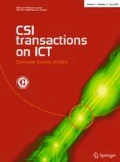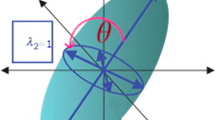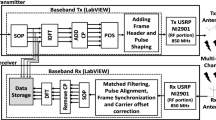Abstract
Sparse representation is widely used in signal/image reconstruction, denoising, restoration, feature extraction, etc. During data compression most of the low magnitude transform coefficients are thrown away while keeping only the high magnitude coefficients. In some practical applications, data acquisition itself is a major challenge, like, signal acquisition in magnetic resonance imaging (MRI), body area networks (BAN), remote sensing, etc. According to compressed sensing theory if signal/image is sparse in some transform domain and acquired with respect to another basis incoherent to the sparse representation basis then one can reconstruct the underlying signal/image just from a few random projections. Multi-dimensional signal processing involving MRI, BAN and remote sensing images takes significant amount of computational time because of their raw data size. Therefore, state-of-the-art sparse reconstruction algorithms developed for parallel computing with multi-core CPU and GP-GPU is required for realtime or near-realtime implementations.



Similar content being viewed by others
Notes
GNRC Hospital, Sixmile, Guwahati, India; http://www.gnrchospitals.com/.
Bhuvan, NRSC Open EO Data Archive , (Last seen on 20 April, 2019). https://bhuvan-app3.nrsc.gov.in/data/download/index.php.
References
Zhang Z, Xu Y, Yang J, Li X, Zhang D (2015) A survey of sparse representation: algorithms and applications. IEEE Access 3:490–530
Donoho D (2006) Compressed sensing. IEEE Trans Inf Theory 52(4):1289–1306
Hollingsworth KG (2015) Reducing acquisition time in clinical MRI by data undersampling and compressed sensing reconstruction. Phys Med Biol 60(21):R297–R322
Candes EJ, Romberg JK, Tao T (2006) Robust uncertainty principles: exact signal reconstruction from highly incomplete frequency information. IEEE Trans Inf Theory 52(2):489–509
Lustig M, Donoho D, Pauly JM (2007) Sparse MRI: the application of compressed sensing for rapid MR imaging. Magn Reson Med 58:1182–1195
Polania LF, Carrillo RE, Blanco-Velasco M, Barner KE (2015) Exploiting prior knowledge in compressed sensing wireless ECG systems. IEEE J Biomed Health Inform 19(2):508–519
SIEMENS Healthineers: MAGNETOM Vida Embrace human nature at 3T (2017) https://www.healthcare.siemens.co.in/magnetic-resonance-imaging/3t-mri-scanner/magnetom-vida. Accessed 19 May 2019
O’Brient S (2017) New ‘compressed sensing’ technology could reduce MRI scan times. Rice University. https://www.tun.com/blog/rice-university-technology-mri-scan/. Accessed 19 May 2019
King K (2016) HyperSense enables shorter scan times without compromising image quality. GE Healthcare. http://www3.gehealthcare.com.sg/~/media/documents/us-global/products/magnetic-resonance-imaging/2017/hypersense.pdf. Accessed 19 May 2019
Geerts-Ossevoort L, de Weerdt E, Duijndam A, van IJperen G, Peeters H, Doneva M, Nijenhuis M, Huang A (2018) Compressed SENSE speed done right. Every time. Philips. https://philipsproductcontent.blob.core.windows.net/assets/20180109/619119731f2a42c4acd4a863008a46c7.pdf. Accessed 19 May 2019
Zhang J, Gu Z, Yu ZL, Li Y (2015) Energy-efficient ECG compression on wireless biosensors via minimal coherence sensing and weighted \(l_1\) minimization reconstruction. IEEE J Biomed Health Inform 19(2):520–528
Shimmer3 ECG Unit (2008) http://www.shimmersensing.com/products/shimmer3-development-kit. Accessed 19 May 2019
Handheld 12-Channel Tele-ECG Instrument (2017) http://barc.gov.in/technologies/ecg/index.html. Accessed 17 May 2019
Huang J, Zhang S, Metaxas DN (2011) Efficient MR image reconstruction for compressed MR imaging. Med Image Anal 15(5):670–679
Chen C, Huang J (2014a) Exploiting the wavelet structure in compressed sensing MRI. Magn Reson Med 32:1377–1389
Chen C, Huang J (2014b) The benefit of tree sparsity in accelerated MRI. Med Image Anal 18(6):834–842
Chen C, Li Y, Huang J (2014) Forest sparsity for multi-channel compressive sensing. IEEE Trans Signal Process 62(11):2803–2813
Majumdar A, Ward RK (2012) Calibration-less multi-coil MR image reconstruction. Magn Reson Med 30(7):1032–1045
Chen C, Li Y, Huang J (2013) Calibrationless parallel MRI with joint total variation regularization. In: Mori K, Sakuma I (eds) International conference on medical image computing and computer assisted intervention (MICCAI-2013). Lecture notes in computer science, vol 8151. Springer, Berlin, pp 106–114
Chun IY, Adcock B, Talavage TM (2016) Efficient compressed sensing SENSE pMRI reconstruction with joint sparsity promotion. IEEE Trans Med Imaging 35(1):354–368
Holme HCM, Rosenzweig S, Ong F, Wilke RN, Lustig M, Uecker M (2019) ENLIVE: an efficient nonlinear method for calibrationless and robust parallel imaging. Sci Rep 9(3034):1–13
Vasanawala S, Alley M, Hargreaves B, Barth R, Pauly J, Lustig M (2010) Improved pediatric MR imaging with compressed sensing. Radiology 256(2):607–616
Mamaghanian H, Khaled N, Atienza D, Vandergheynst P (2011) Compressed sensing for real-time energy-efficient ECG compression on wireless body sensor nodes. IEEE Trans Biomed Eng 58(9):2456–2466
Hooshmand M, Zordan D, Del Testa D, Grisan E, Rossi M (2017) Boosting the battery life of wearables for health monitoring through the compression of biosignals. IEEE Internet Things J 4(5):1647–1662
Zhang Z, Jung T, Makeig S, Rao BD (2013) Compressed sensing for energy-efficient wireless telemonitoring of noninvasive Fetal ECG via block sparse bayesian learning. IEEE Trans Biomed Eng 60(2):300–309
Zhang J, Yu ZL, Gu Z, Li Y, Lin Z (2018) Multichannel electrocardiogram reconstruction in wireless body sensor networks through weighted \(l_{1,2}\) minimization. IEEE Trans Instrum Meas 67(9):2024–2034
Yang J, Wright J, Huang TS, Ma Y (2010) Image super-resolution via sparse representation. IEEE Trans Image Process 19(11):2861–2873
Moustafa MS, Ebied HM, Helmy AK, Nazamy TM, Tolba MF (2017) Acceleration of super-resolution for multispectral images using self-example learning and sparse representation. Comput Electr Eng 62:249–265
Zhu XX, Bamler R (2013) A sparse image fusion algorithm with application to pan-sharpening. IEEE Trans Geosci Remote Sens 51(5):2827–2836
Lustig M, Pauly J (2010) SPIRiT: iterative self-consistent parallel imaging reconstruction from arbitrary k-space. Magn Reson Med 64(2):457–471
Liang D, Liu B, Wang J, Ying L (2009) Accelerating SENSE using compressed sensing. Magn Reson Med 62(6):1574–1584
Uecker M, Lai P, Murphy MJ, Virtue P, Elad M, Pauly JM, Vasanawala SS, Lustig M (2014) ESPIRiT-an eigenvalue approach to autocalibrating parallel MRI: where SENSE meets GRAPPA. Magn Reson Med 71(3):990–1001
Sameni R (2012) The open-source electrophysiological toolbox (OSET). http://www.oset.ir. Accessed 18 July 2018
Mamaghanian H, Ansaloni G, Atienza D, Vandergheynst P (2014) Power-efficient joint compressed sensing of multi-lead ECG signals. In: IEEE international conference on acoustics, speech and signal processing (ICASSP) 2014, pp 4409–4412
Acknowledgements
Author would like to thank “Visvesvaraya PhD Scheme for Electronics and IT” (Grant No. MLA/MUM/GA/10(37)B dt. 15/01/2018), Ministry of Electronics and Information Technology, Government of India for providing financial support to setup necessary infrastructure besides contingency funds for carrying out this research.
Author information
Authors and Affiliations
Corresponding author
Rights and permissions
About this article
Cite this article
Deka, B. Sparse representations and compressive sensing in multi-dimensional signal processing. CSIT 7, 233–242 (2019). https://doi.org/10.1007/s40012-019-00242-x
Received:
Accepted:
Published:
Issue Date:
DOI: https://doi.org/10.1007/s40012-019-00242-x




